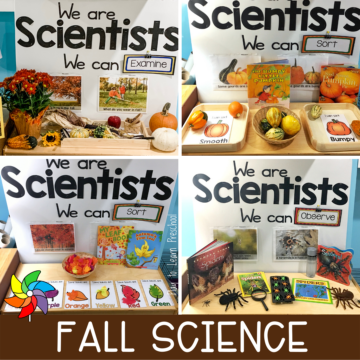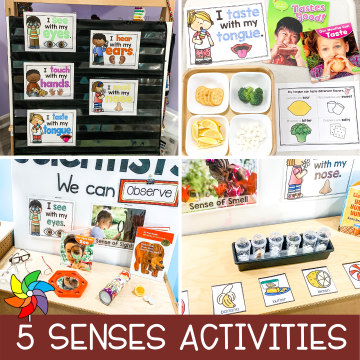Students will be amazed as transformations happen before their eyes with this dirty penny experiment. It is a fun way to introduce the scientific method. It only takes a few simple ingredients and literally only costs pennies to do. Definitely worth the investment!
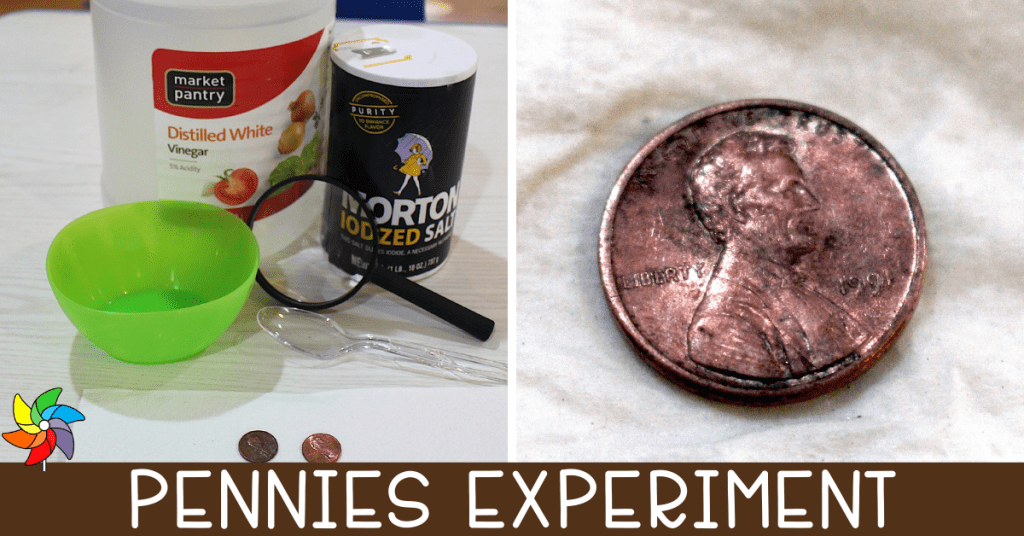
Preschool Science Experiments
Incorporating science experiments into the day can seem like an overwhelming task for many preschool teachers. What supplies does the experiment need? How will the children know how to use the materials? What if something goes wrong? Ah!!!
In reality, science in preschool is an opportunity for students to explore big ideas. There isn’t a need to get bogged down with the specifics and scientific vocabulary. The experiments done in a preschool classroom should allow students hands-on experience that sparks inquiry and discussion.
Some Preschool Science Experiment Ideas:
- Test items buoyancy to see if they sink or float in water. Allow students to predict the outcomes and then test their theories.
- Explore chemical reactions by making baking soda & vinegar fizzy rainbows. Students gain valuable experience with color theory while being able to see the effects of the vinegar on the baking soda.
- Learn about how different liquids interact using a simple oil & water experiment. Extension activities can also be done with this as students will begin to question if oil only reacts with water this way, or other liquids, like milk, as well.
- Study the five senses with a variety of activities geared towards preschoolers. Students will begin to realize that their senses are great tools in exploring the world around them.
- And of course, practicer predictions and discuss simple chemistry with the penny experiment!
Even more Science Centers – Enough for the WHOLE YEAR!
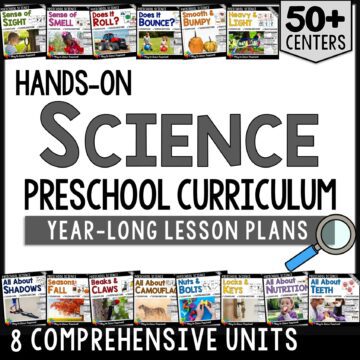
Preschool Science Centers for the Year
$99.00Students will enjoy hands-on SCIENCE CENTERS all year long. Each unit includes a list of supplies for each topic, learning objectives, lesson ideas, as well as photos and activities that students will want to explore again and again! Encourage young learners to ask questions, make observations, and develop scientific thinking skills.
Using the Scientific Method for the Penny Experiment
No need to reserve using the scientific method for higher-level education. Preschool students are naturally inquisitive, and the process of asking questions and trying ideas is natural for them. In this experiment, students are presented with a question, make a guess (hypothesis), test a theory, and then discuss their findings. It is everything early science should be, including the fun.
Step One: Make a Hypothesis for the Penny Experiment
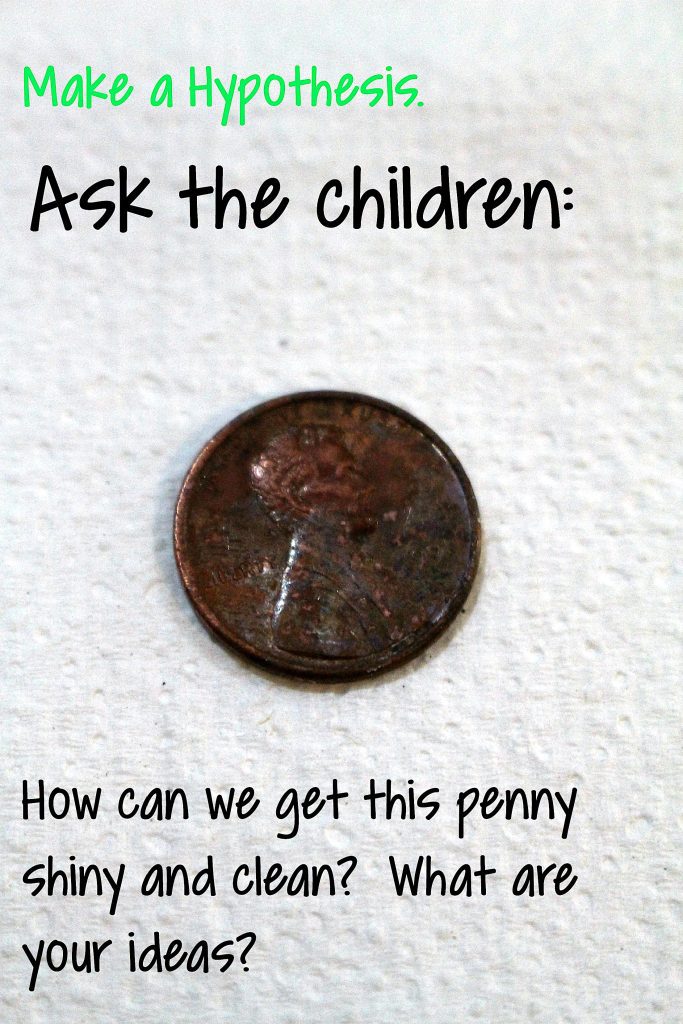
First, show the students some old, dirty pennies. Ask them to describe the appearance of a new penny. Show pictures or present new pennies for comparison.
Next, ask the students, “How can we get this penny shiny and clean?”
As a class, brainstorm ideas to clean the penny – water, hand soap, dish soap, baby wipes. Introduce the word “hypothesis” and explain that it is simply a fancy word for a guess of what will happen. Write the ideas on a chart paper and try a few together. Students will begin to realize that none of these really work in getting the penny shiny and clean.
Step Two: Gather the Supplies
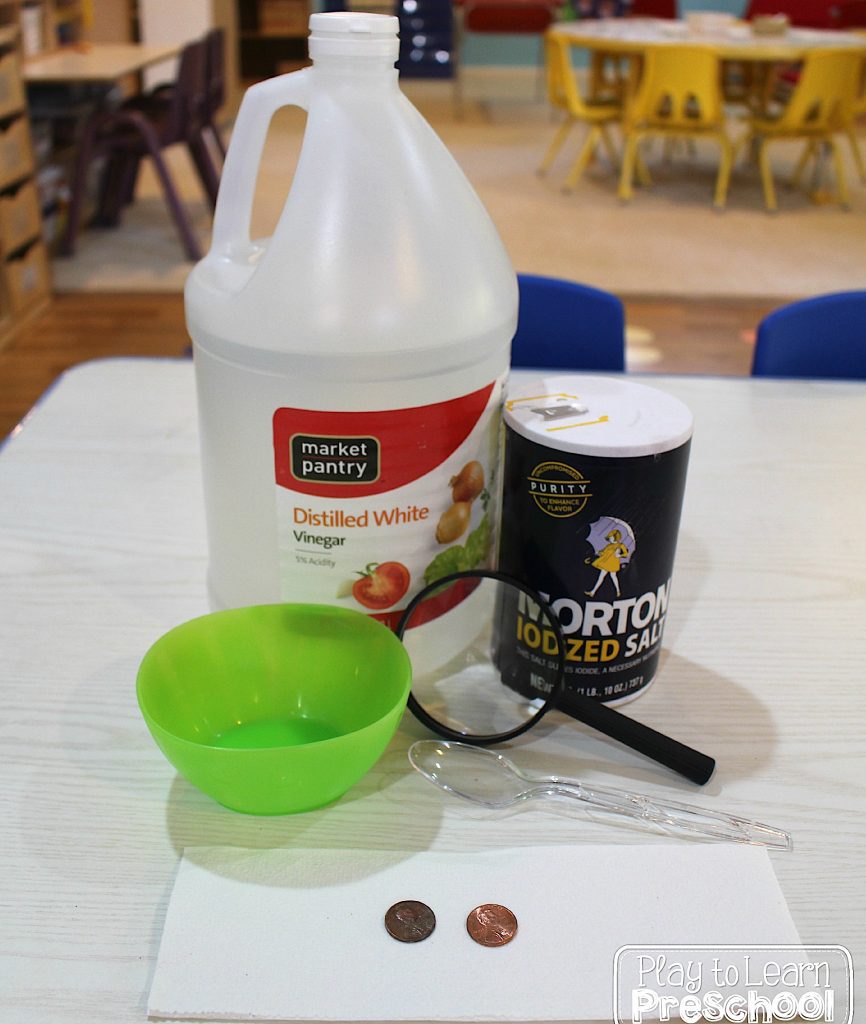
Supplies Needed:
- dirty pennies
- white vinegar
- salt
- plastic bowls
- paper towels
- plastic spoons
Step Three: Test the Idea
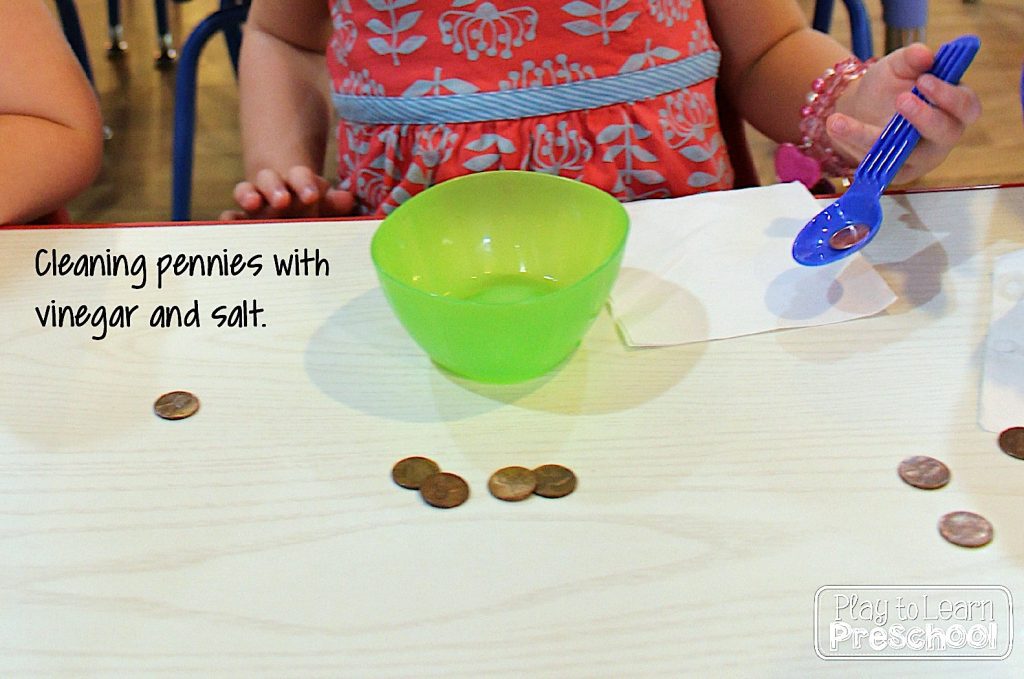
The next step is to test the new idea of cleaning the pennies with salt and vinegar. Students may be skeptical of this as it most likely isn’t something they have experienced before.
Pour 1/4 cup of vinegar into each bowl along with a teaspoon of salt. Drop a penny into the mixture and allow them to sit for about a minute. Remove the pennies from the bowl with a plastic spoon and wipe with a damp paper towel.
Step Four: Discuss the Results of the Penny Experiment
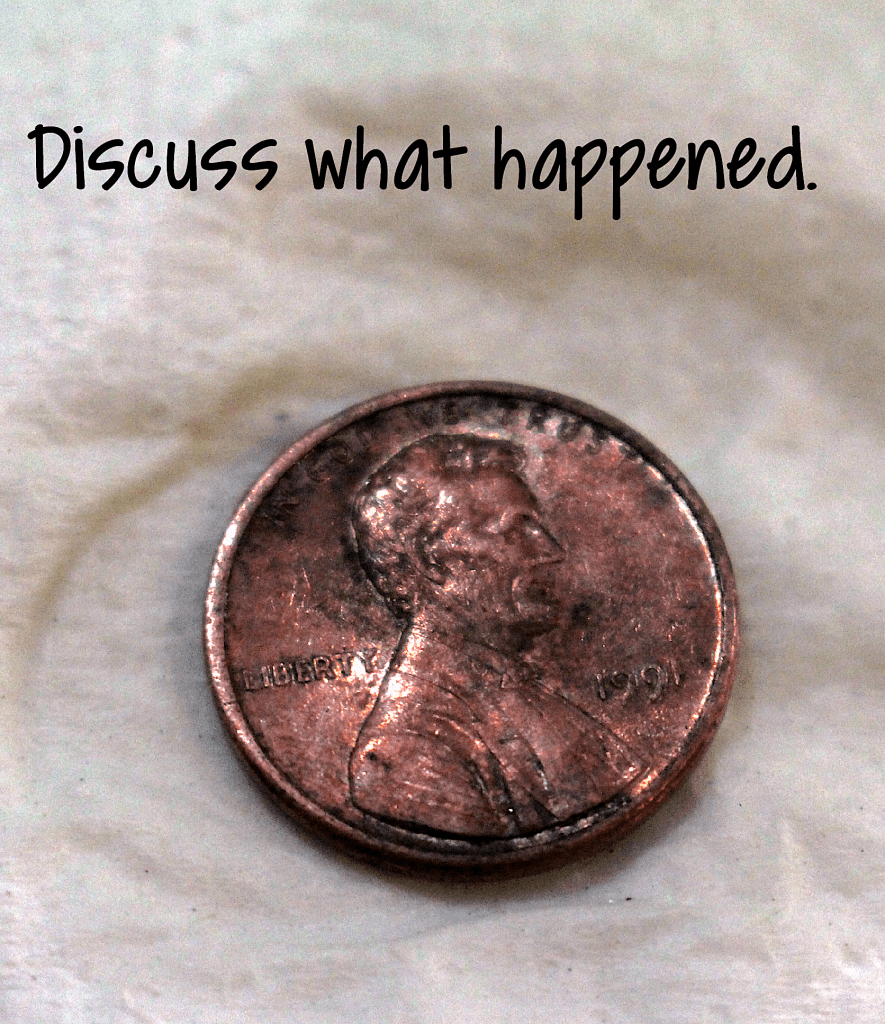
Once the pennies have had time to sit in the mixture and are then wiped off, students will begin to see the dirt has been removed. Allow students to investigate the pennies closer by using magnifying glasses. What do they notice? What do they think happened?
What happened is pretty neat. Introduce the word “acid” and tell the students that vinegar is an acid. The vinegar reacts, or works with, the salt to remove the dirt and bring back the shine. How cool!
More Science Fun
As this penny experiment demonstrates, science is not something reserved for college-level students. Children have the desire to learn and providing real-world, hands-on experiences is the best way to enable them to do so. Continue the science fun throughout the year as students build and grow their knowledge.
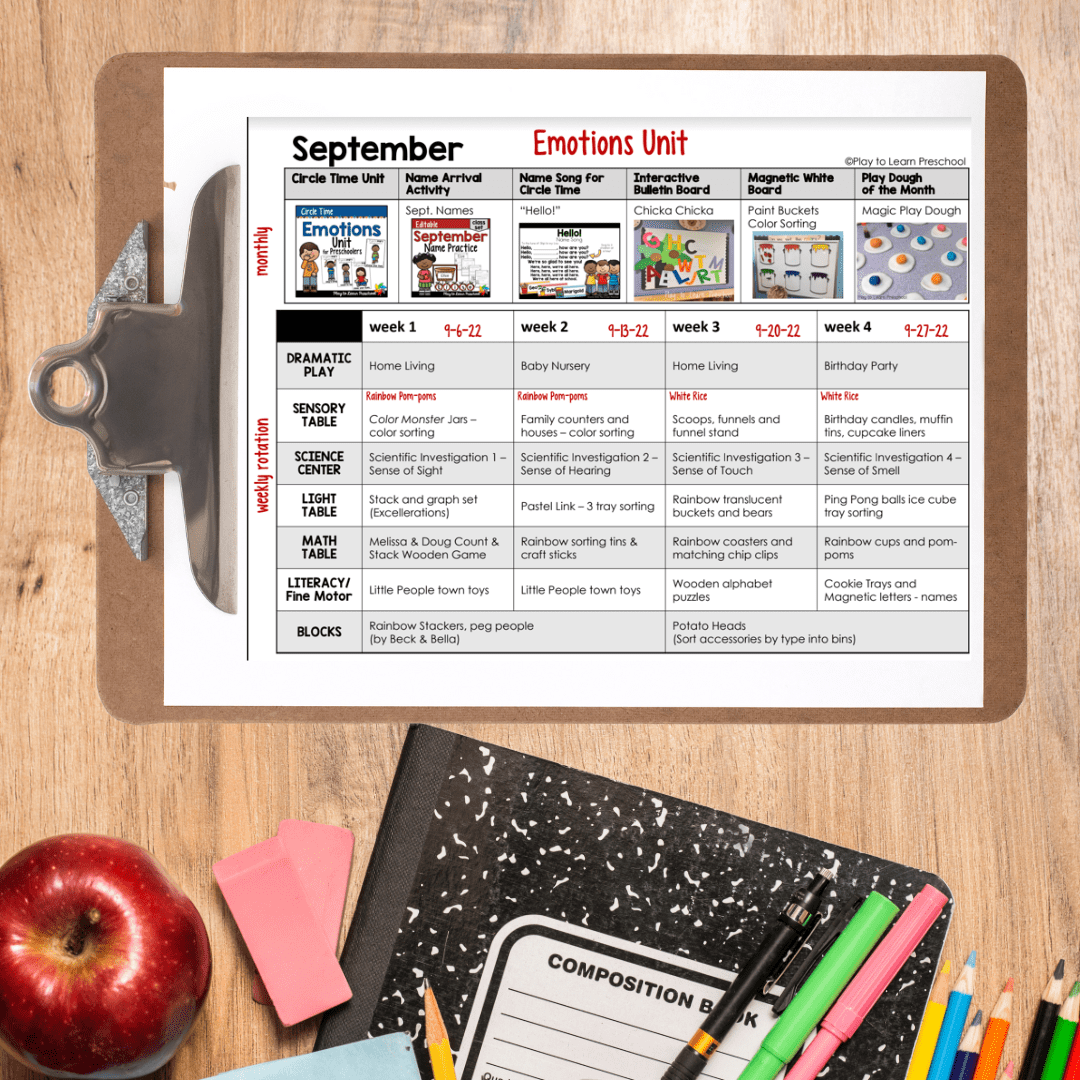
FREE Scope And Sequence!
After you subscribe, you will be redirected to the FREE Scope and Sequence. We respect your privacy. Unsubscribe at any time.
